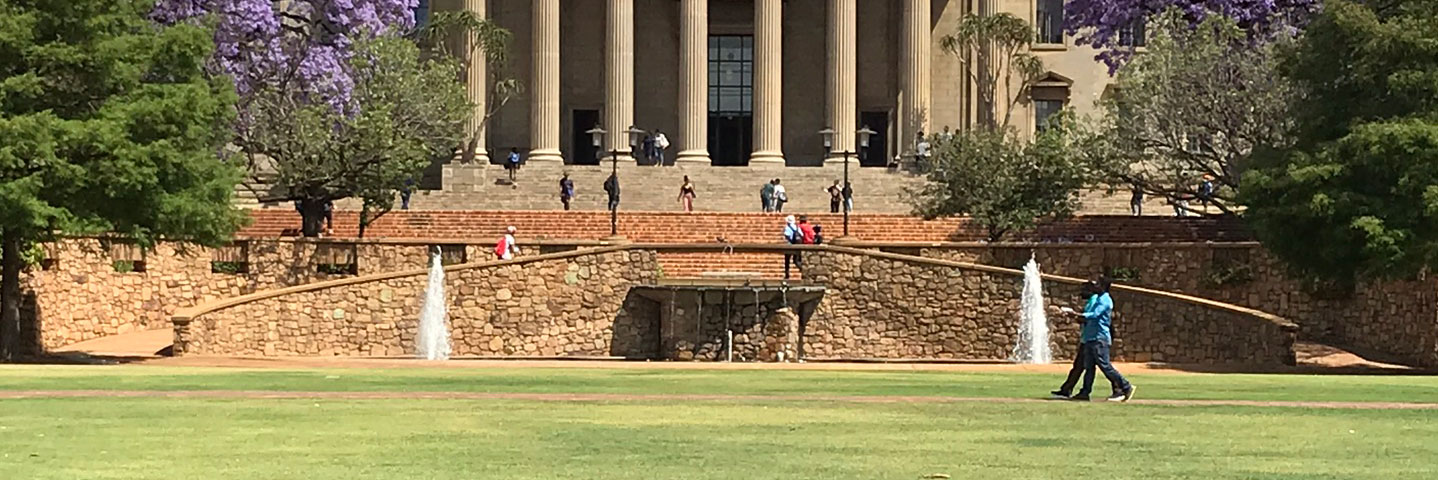7 September 2020
Addressing Digital Poverty at the University of the Witwatersrand, South Africa

Author
Professor Diane Grayson
Senior Director: Academic Affairs, University of the Witwatersrand
South Africa went into hard lockdown on 27 March, one week after the end of the first term at the University of the Witwatersrand (Wits). Like much of the world, we decided to continue the academic programme via Emergency Remote Teaching (ERT), beginning on 20 April. We made plans to move all our teaching to online using our learning management system (LMS). Before and during the second term we developed a plethora of materials, augmented by frequent webinars, to help academics transition from contact teaching to teaching online.
However, unlike wealthier countries, in South Africa many of our students have poor internet connectivity and live in small homes in crowded conditions. Electricity supply is regularly interrupted, sometimes for hours or even days at a time, or, in very rural areas, not available at all. Data to connect to the internet through the mobile phone network is expensive, and many of our students have no computer at home. The most glaring form of digital poverty for many of our students was not being able to access the LMS.
Access to the LMS requires a device, mobile data or other way of connecting to the internet, and connectivity (a strong mobile signal or good physical connection). To address the device issue, Wits negotiated a good price on 5000 laptop computers, which were loaned to the students in greatest financial need. Student Affairs managed the application and selection process, and Wits partnered with the Post Office to courier the computers to students.
To address the data issue, Wits negotiated a good price with mobile network providers for 30 GB of data (10 GB anytime, 20 GB Nightowl) to every Wits student in South Africa for a month, followed by another 15 GB up to early June. We also negotiated for a number of websites, including the LMS and Library, to be zero-rated, which means that students can use them for free on their devices. From June, Wits conducted a survey among students and staff, and those who said they need data are receiving 30 GB monthly to use on selected Wits URLs accessed through the Wits virtual private network.
Although Wits has provided data and devices, the data is limited. An information page was compiled for staff and students indicating how much data is typically needed for particular activities. For staff who had planned to have synchronous sessions, seeing the cost in data made them rethink their plans, particularly the use of live videos. It also helped students manage their data allocation. As far as possible, most teaching is asynchronous, although the LMS chat function and discussion forums are widely used, as these are zero-rated. Recently, we started using BigBlueButton from within the LMS (also zero-rated) for limited synchronous class meetings. Webinars, videos and online resources are available to show academics how to compress video files and create voiceover PowerPoint presentations. A step-by-step guide was produced for students on how to schedule downloads so they can take advantage of cheaper nighttime rates to download learning materials.
For the many students whose only device is a mobile phone, assignments and tests that require written answers can be submitted by photographing a handwritten document and uploading it as a jpeg file to the LMS.
Unfortunately, Wits cannot assist with connectivity as this depends on the location of mobile phone towers or fibre networks and reliable electricity supply. However, we took cognisance of potential connectivity and power supply issues (as well as challenges with finding a quiet place to work in a crowded home) during the final assessments in June by allowing window periods for submission - in most cases 24 to 48 hours - rather than giving timed examinations. In some courses, students could download the final assessment task as a pdf and then upload either a handwritten document, for the many students who only have access to mobile phones, or an electronic copy within the window period.
In addition to addressing logistical challenges, we are also helping students who are inexperienced in learning online, another form of 'digital poverty'. In the week preceding the second term, each faculty created an interactive LMS orientation site, and has continually uploaded learning resources for students. Online course tutors provide academic support, and faculty student advisers and counsellors provide support with life skills and wellbeing. The Counselling and Careers Development Unit provides regular wellness resources, starting with the COVID-19 Wellness Chronicles. Between 20 April and 5 June, log-in data showed that 95% of undergraduate students accessed the LMS weekly.
Our third term began on 13 July and it is clear that teaching in an online mode will continue for most students for the rest of the year. A small number of students who live in especially difficult circumstances will learn online on campus, with good wi-fi access. Everyone is getting more comfortable with operating in this mode, and we feel confident that our students will have a worthwhile learning experience.
At the end of August our institutional research unit will conduct an institution-wide survey of students and staff to find out what their experiences have been of learning, teaching and working remotely, as well as how the pandemic and resulting lockdown have affected their physical and mental health and overall wellbeing. We have lengthened our calendar and added in an extra assessment period and time for concentrated laboratory work or revision for limited groups of students on campus. We have also started making videos of key laboratory and fieldwork. Monitoring of the 'state of the university' will continue both formally and informally as we work together to weather this global crisis.
